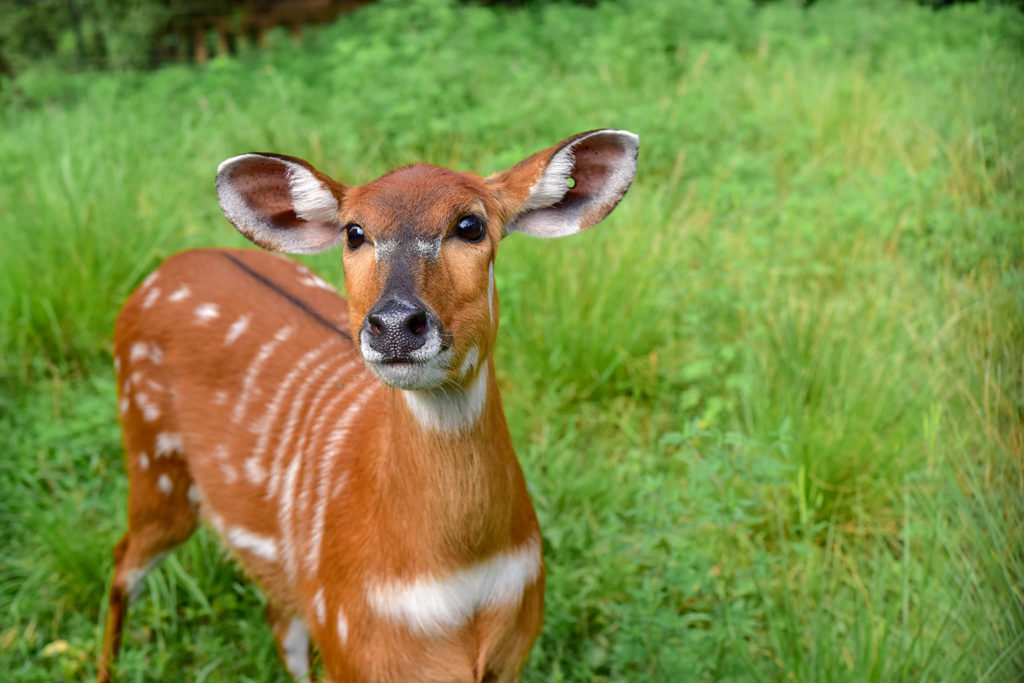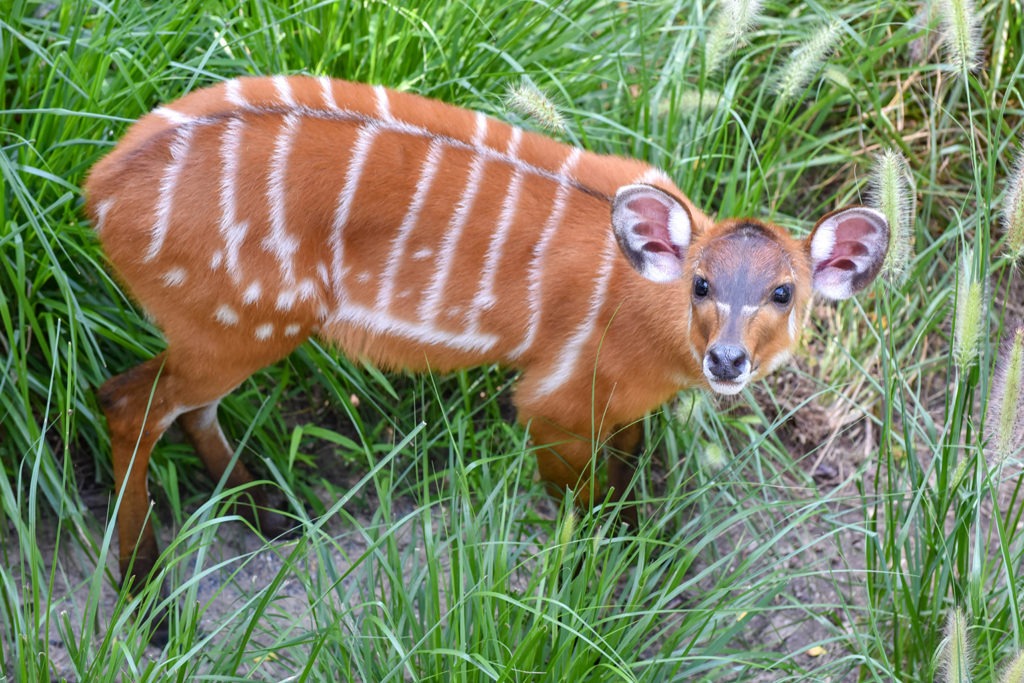Overview
“Where I live”
Sitatunga live in secluded, thickly vegetated, muddy swamps and marshes throughout central Africa. See them at the Zoo in the African Journey, across from the flamingos.
“How I live there”
Sitatunga tend to be solitary animals. Females may form loose herds but males keep to themselves. Sitatunga feed on bulrushes, sedges and leaves of bushes growing in the swamp or near the forested edge. They also eat fallen fruit and chew the bark of some trees and bushes. They rest on dry mounds in the swamp, turning in circles to trample the grass into a comfortable mat.
“Making my mark”
Through repeated use, sitatunga carve regular, tunneled pathways through the tall reeds of their swamp habitat. To those who know how to look, they quietly advertise their presence in an area.
“What eats me”
When on dry land where they are less agile, sitatunga are vulnerable to predators such as leopards, lions and wild dogs. They will take to the water to evade such predators, staying submerged with only their nostrils showing. They also have to be wary of pythons and crocodiles, as well as human hunters who trap sitatunga with relative ease in snares set along their well-traveled pathways.
Raising young
Male and female sitatunga come together temporarily to form mating pairs. A female prefers to give birth on a dry mound in the swamp where vegetation has been trampled down into a mat. Female sitatunga usually give birth to a single offspring at a time. The sitatunga calf will remain on the mat for about a month, with occasional visits from its mother for suckling. It will continue to nurse for four to six months but becomes independent after that. Young sitatunga separate from their mothers sooner than do most antelope.
Conservation
Sitatunga are listed as a species of least concern by the IUCN, the world’s leading conservation organization. However, outside of protected areas sitatunga are particularly vulnerable to habitat loss due to human development of swamp land. They also may be subject to over-hunting in some areas.
The Maryland Zoo has helped to produce and maintain both the studbook and the Population Management Plan (PMP) for sitatunga in AZA-accredited institutions. The PMP contains breeding recommendations that will foster a healthy, genetically diverse and demographically stable population of sitatunga in North America.
Taxonomy
- Kingdom: Animalia
- Phylum: Chordata
- Subphylum: Vertebrata
- Class: Mammalia
- Order: Artiodactyla
- Family: Bovidae
- Genera: Tragelaphus
- Species: spekei



